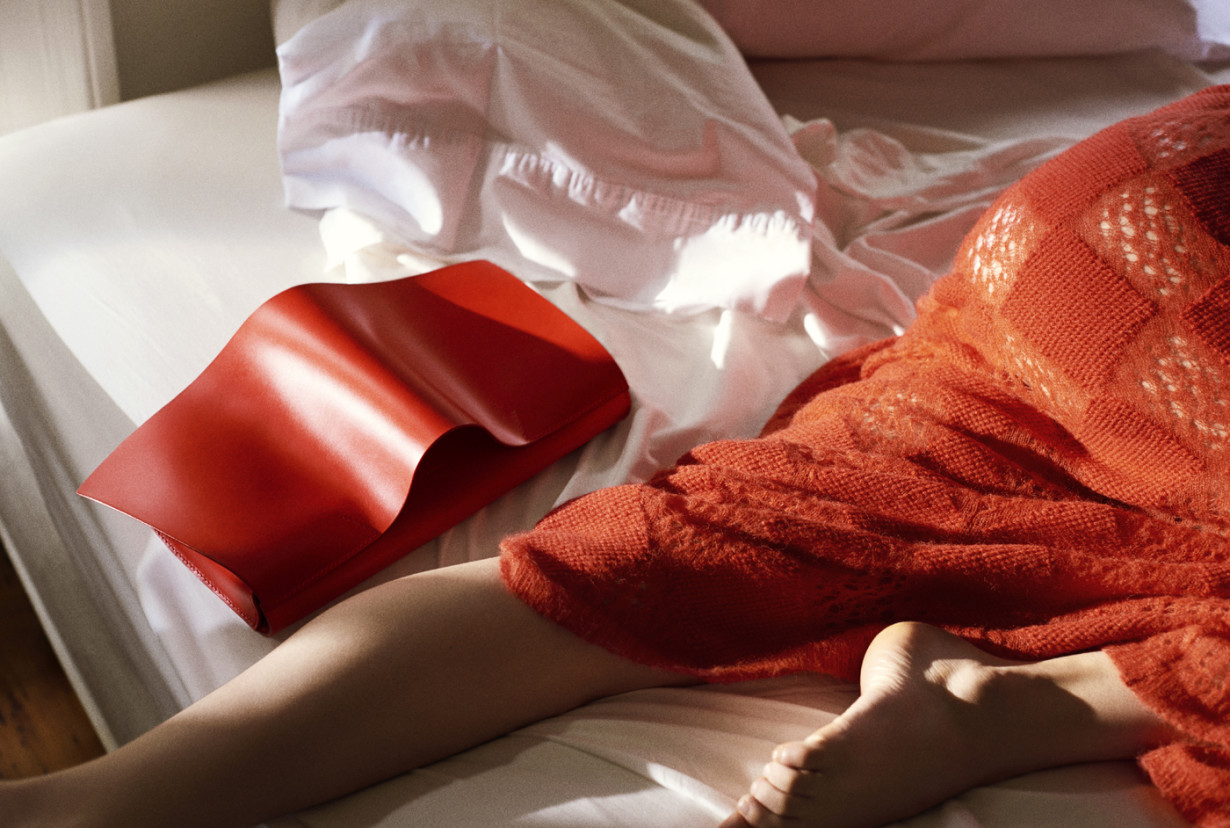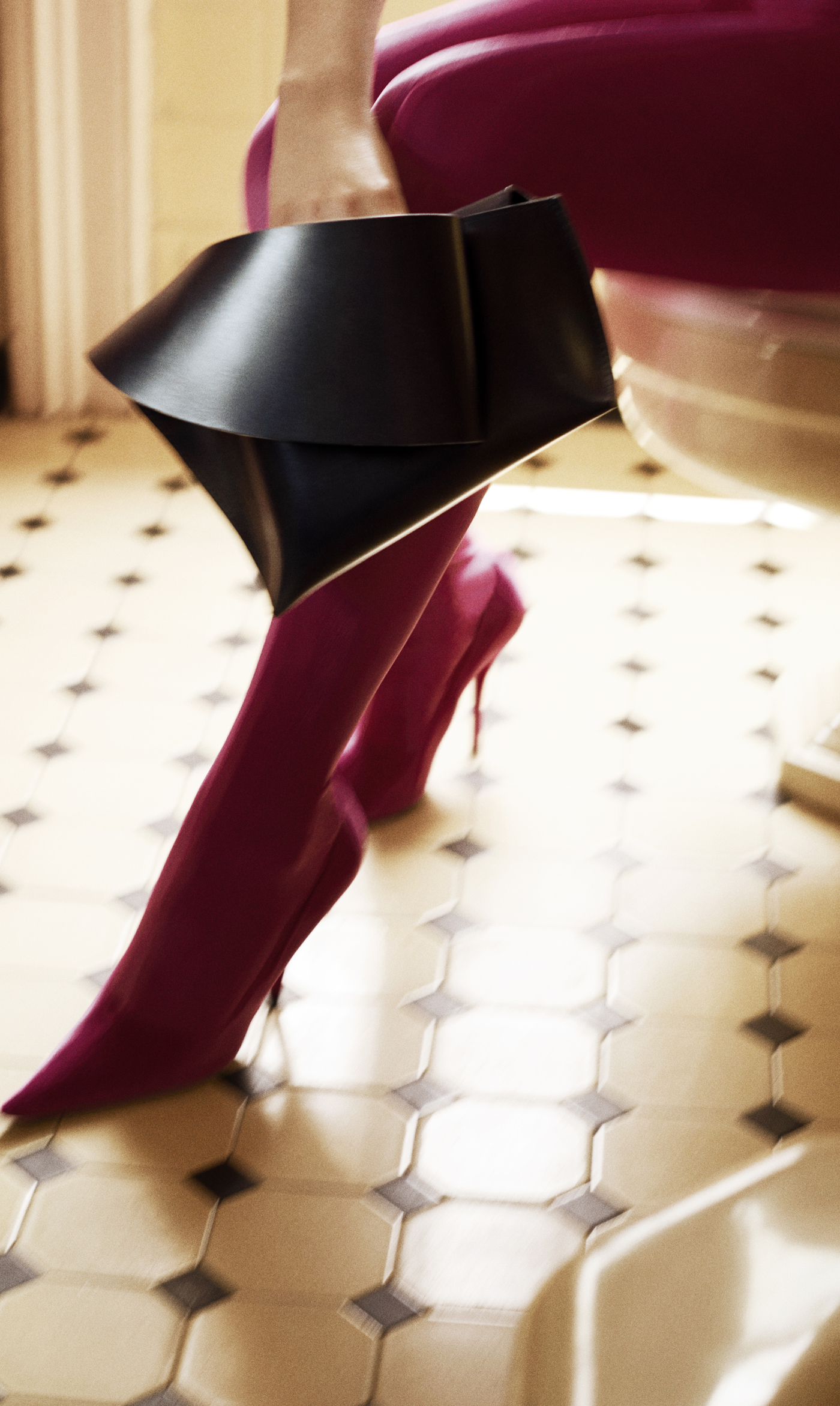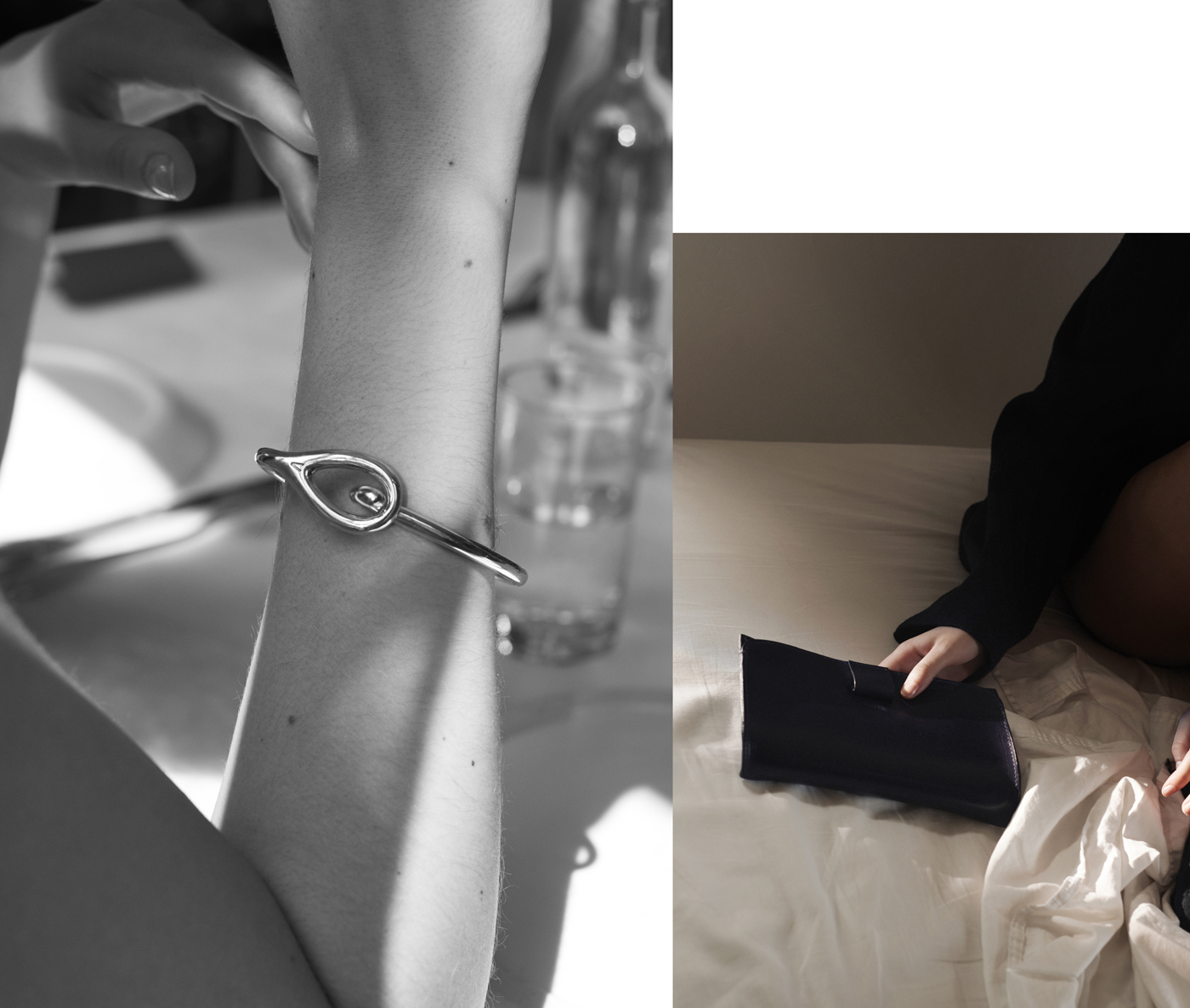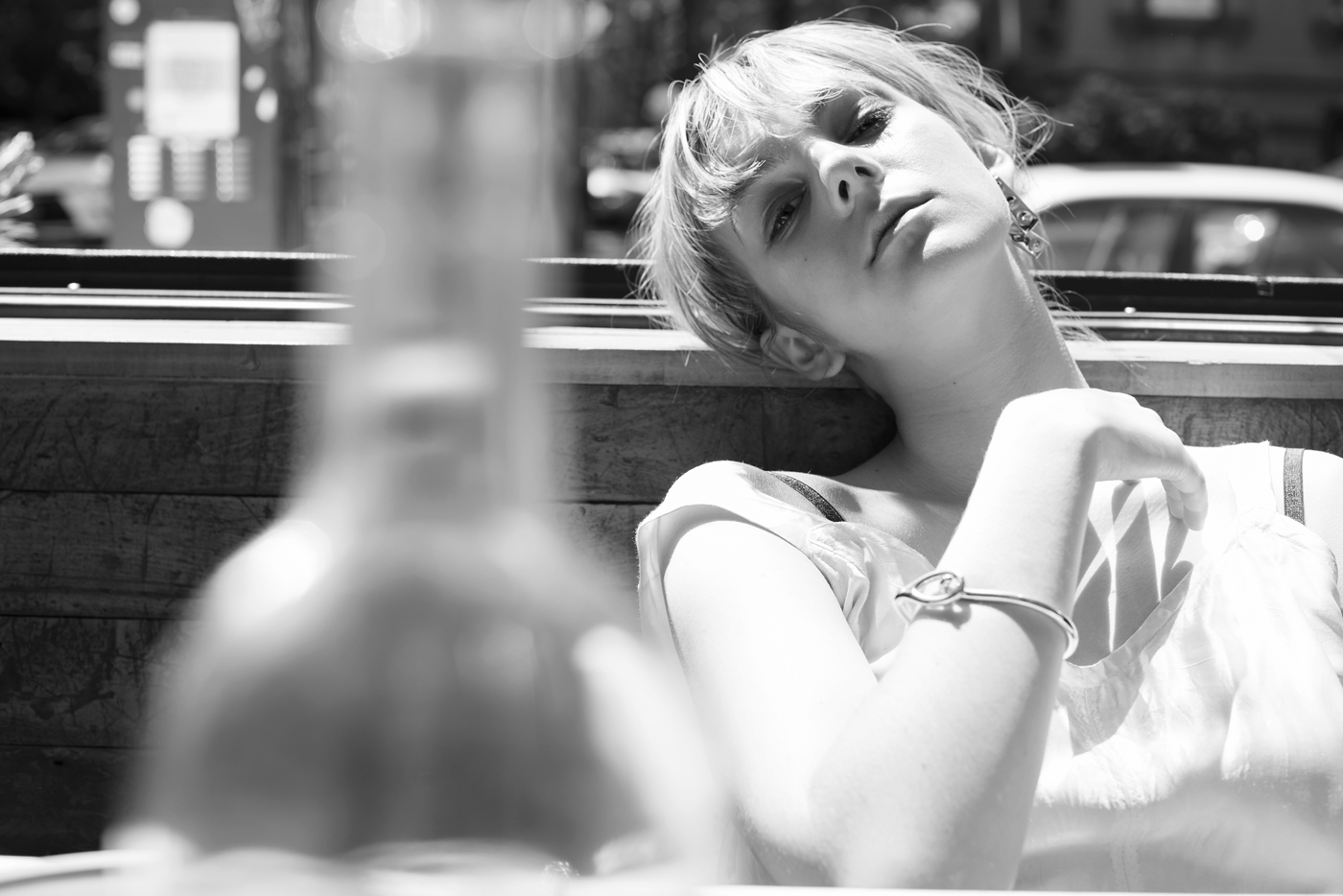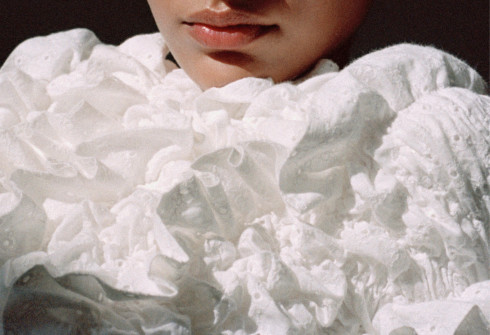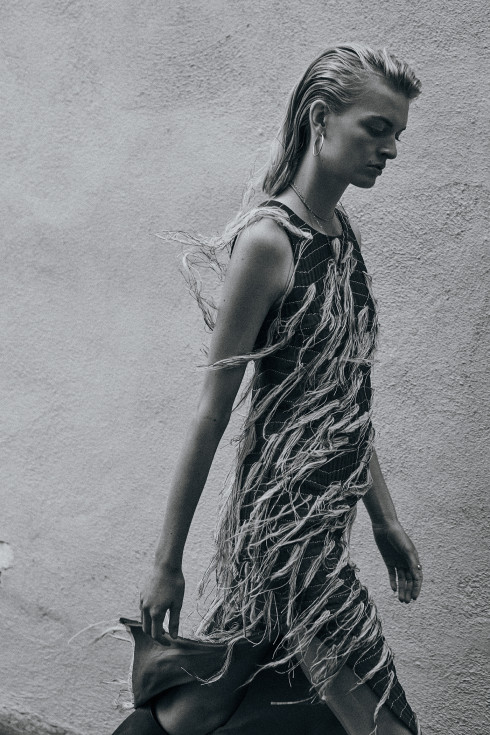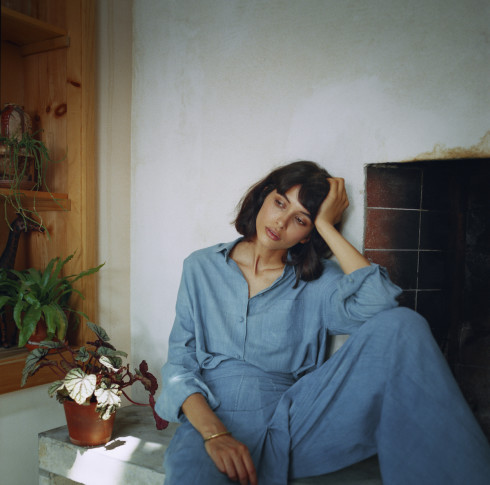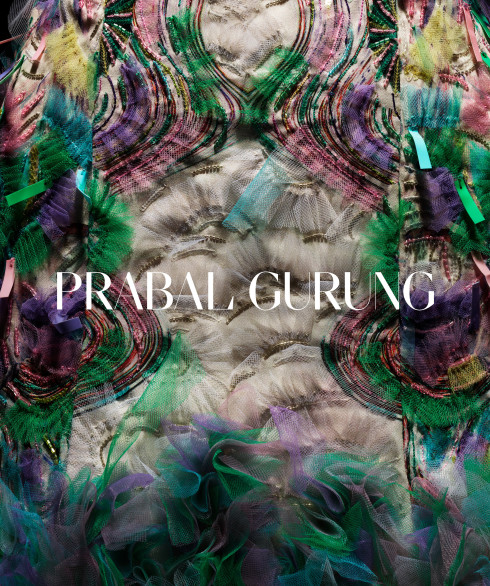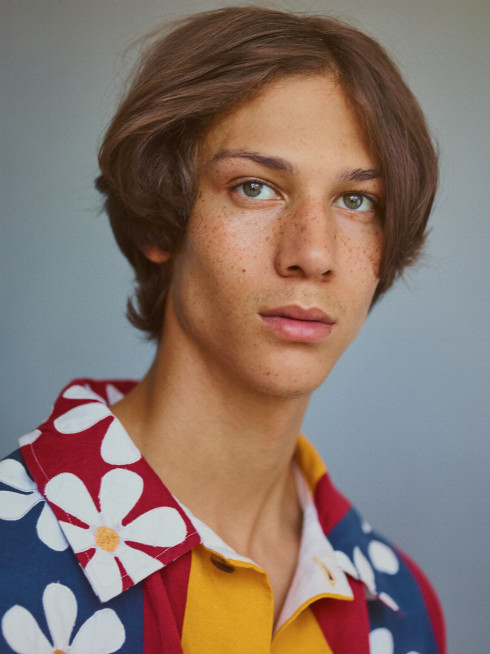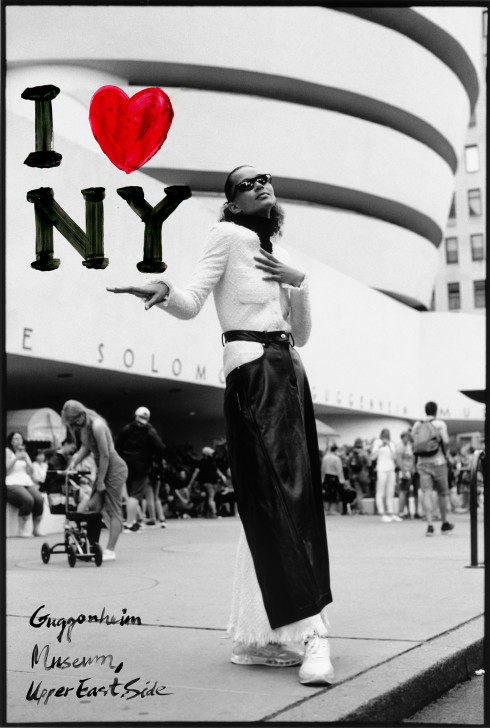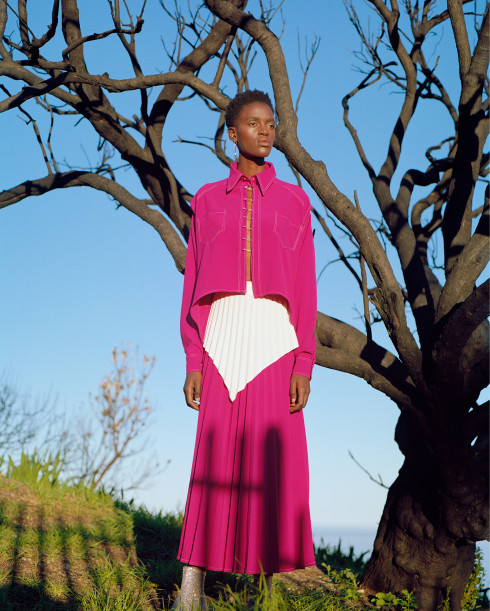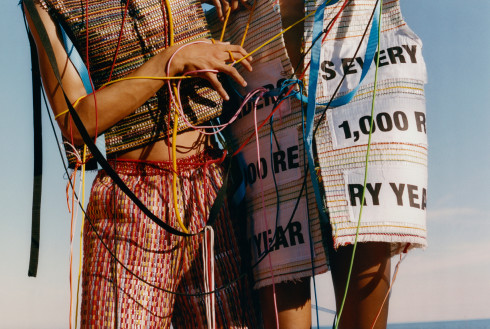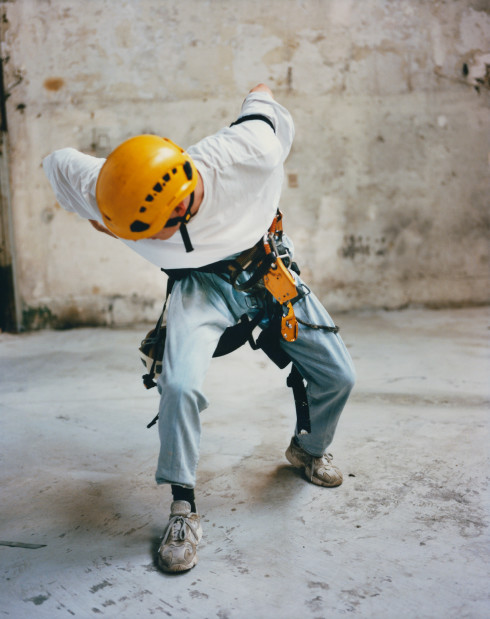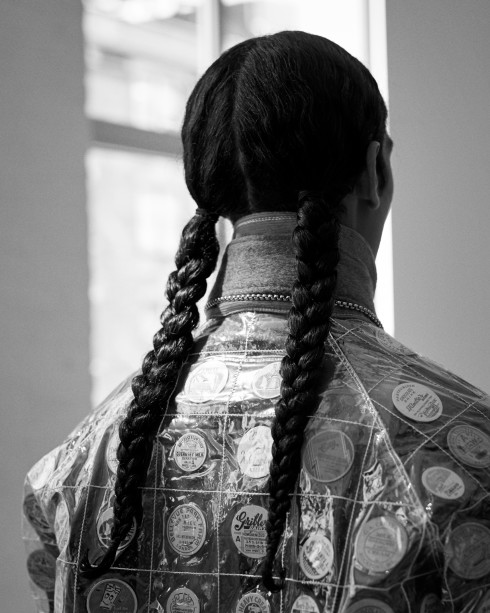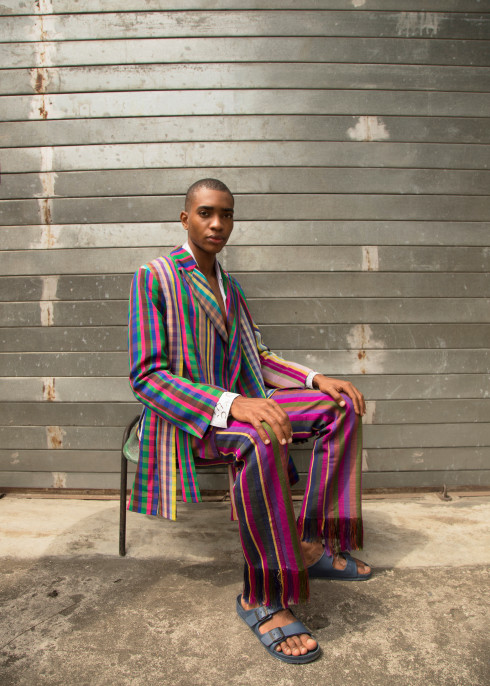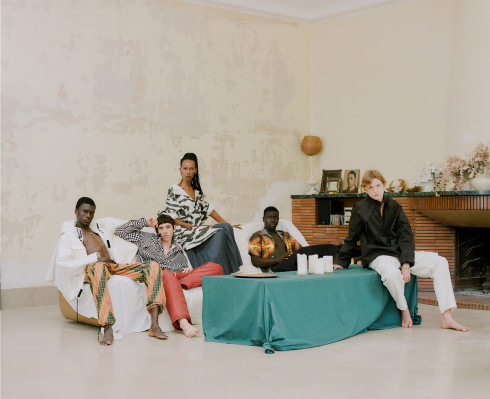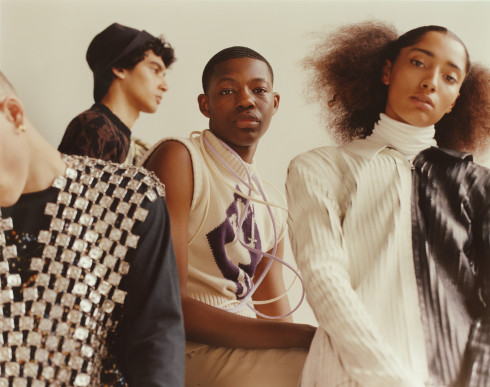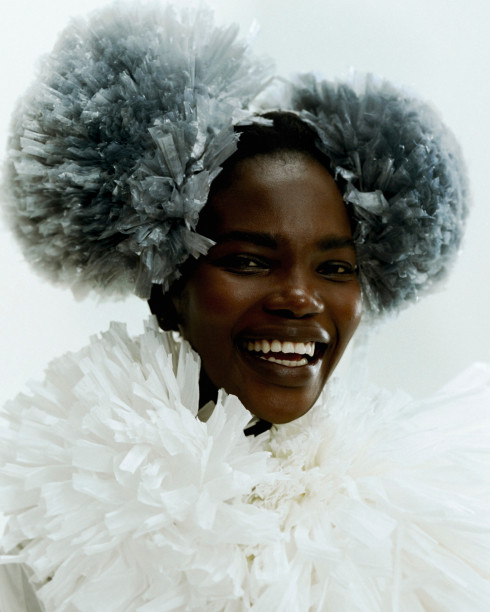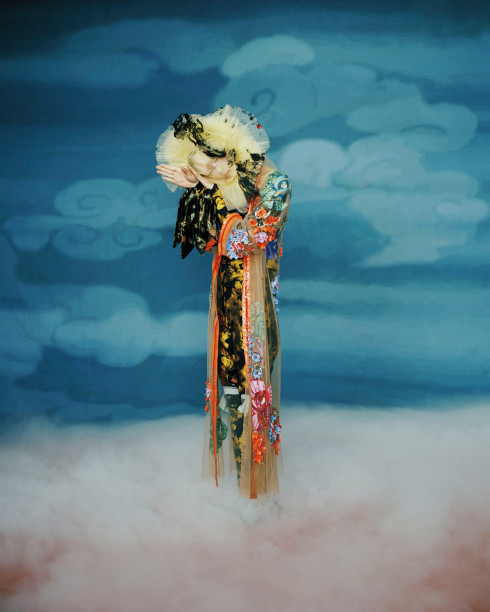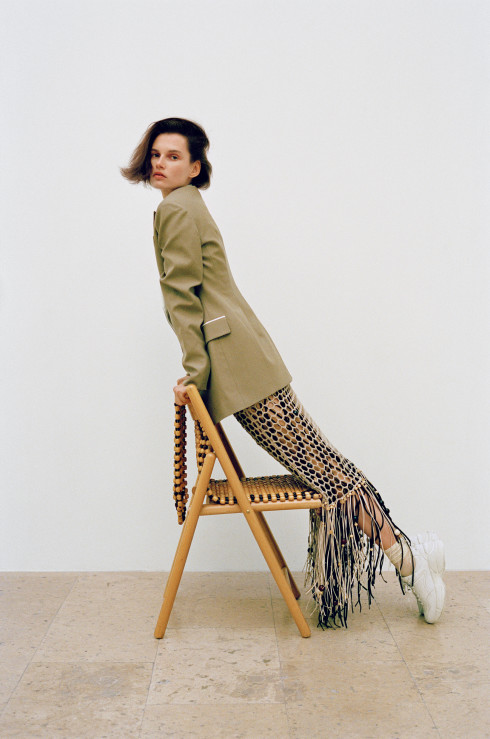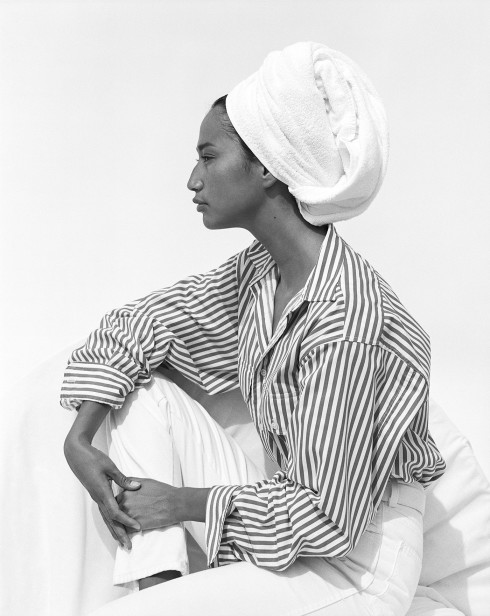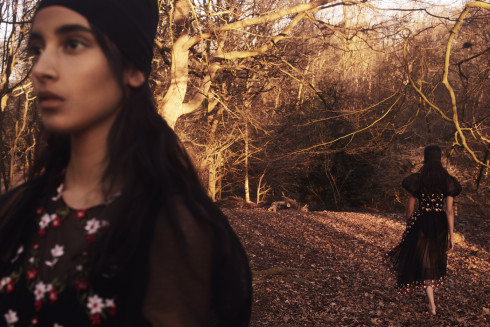- By
- Rosie Dalton
- Photography by
- Annelise Phillips
Styling by Britt Berger. Hair by Nate Rosenkranz at Honey Artists. Makeup by Christyna Kay at Art Department. Model: Hannah Bennett at IMG Models. Photographer’s assistants: Sean Jackson and Braulio Moz. Digital technician: Kasandra Torres. Special thanks to Ashley Martin.
VENCZEL
There is an unexpectedness to VENCZEL accessories that makes them highly compelling. Viewed from afar, the body of a red clutch appears abstract, for example—as if part of a garment rather than a handbag. When viewed up close though, there is a utility to these fast, organic shapes that makes them both classic and contemporary. The VENCZEL universe is all about exploring this interplay, with the brand’s first collection launched this Fall. “I wanted to do something sculptural and quite abstract in my vision,” explains Swedish designer Matilda Venczel. In order to do so, she returned to the roots of the luxury leather industry: the practice of saddlery.
After graduating from the Antwerp Academy and working with ready-to-wear for a number of fashion brands including Ann-Sofie Back, Venczel found herself continually coming back to accessories. Later working with a tannery in the Swedish forest, her fascination only deepened, as she developed a new appreciation for this side of leatherworking. Saddlery is a practice that’s formed the foundations of major fashion houses like Hermès and Gucci, but one that Venczel explains “has kind of disappeared in leather bags now. There is functionality in the way the leather is stitched and trimmed. So rather than making a bag that looks like a saddle, I try to make bags that could be part of one.”
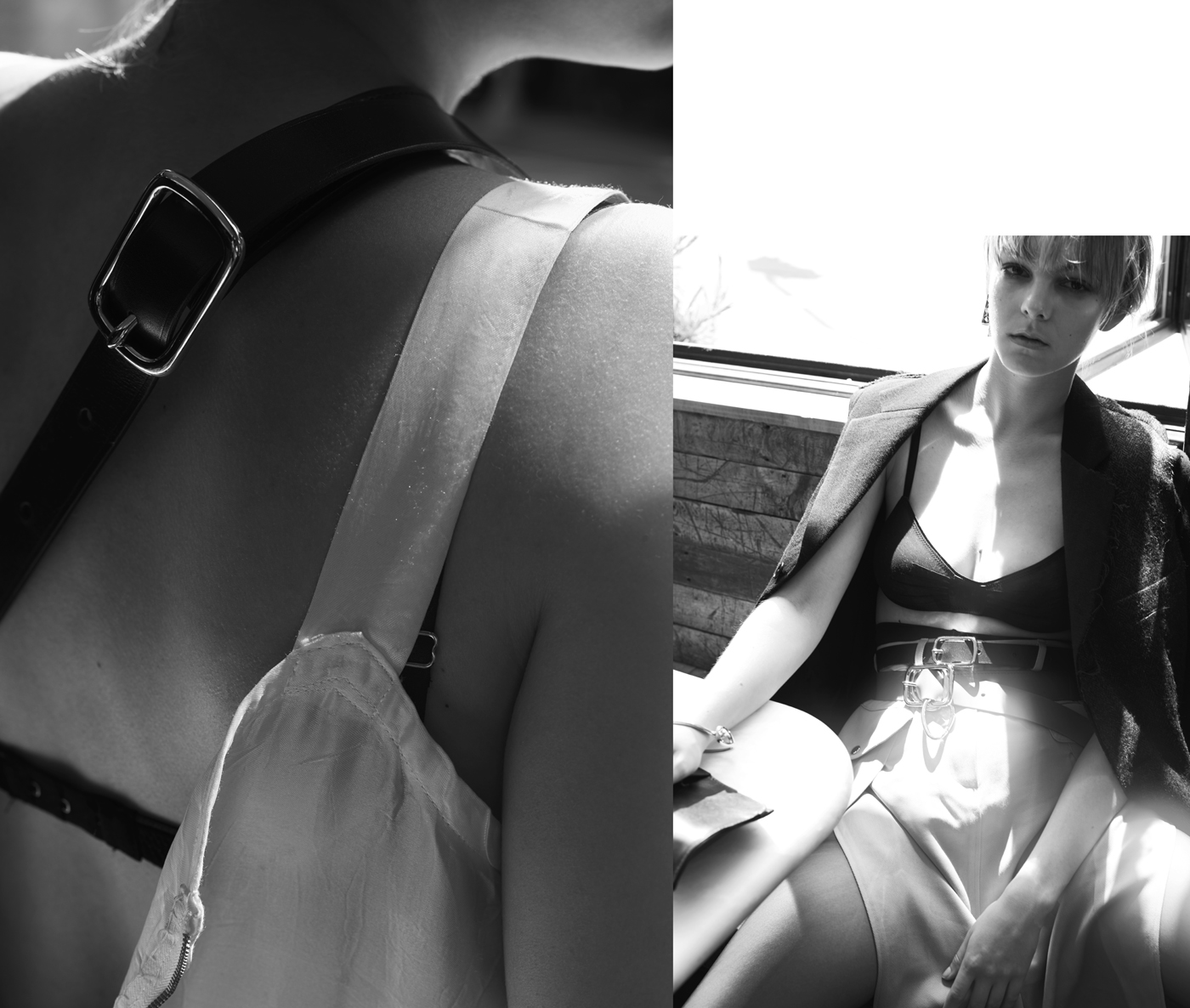
With her studio now based in Copenhagen, Venczel says that her pieces are largely informed by the materials she works with: “I use a different type of leather for my bags, which is mostly used in saddlery.” She likens this point of difference to the thickness of a belt and adds that she is passionate about using aniline leather in particular—which is dyed using soluble pigments to achieve a transparency that embraces the leather’s natural imperfections. “It’s not used in luxury so much anymore because customers just want a perfect blue bag now,” she explains, but this is part of what makes her vegetable-tanned, full-grain leather so special.
This dedication to the integrity of the materials is a reflection of Venczel’s ability to take a slow-form approach in a fast-paced fashion landscape. “If you make garments, you know that you have a maximum of six months for your product to be alive,” she says, describing accessories as the very antithesis to this—as “timepieces.”
With this in mind, the designer says that working with objects is now so much more appealing to her than with clothes. “Anyone can wear one of my handbags, you don’t have to look a certain way or have a certain type of body,” she explains. “It is freer in that sense.” And with this freedom, Venczel has also managed to ensure that, with her accessories, there is always more than meets the eye.
For more information, please visit VNCZL.com.
- By
- Rosie Dalton
- Photography by
- Annelise Phillips
Styling by Britt Berger. Hair by Nate Rosenkranz at Honey Artists. Makeup by Christyna Kay at Art Department. Model: Hannah Bennett at IMG Models. Photographer’s assistants: Sean Jackson and Braulio Moz. Digital technician: Kasandra Torres. Special thanks to Ashley Martin.
